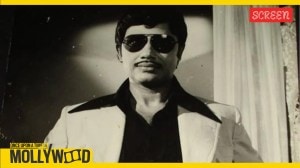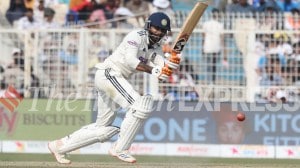"We are going to turn over a new leaf, we are not going to give up"
The story goes that as a young man, Strobe Talbott was courting a California girl named Brooke Shearer -- now his wife -- who came to New...

The story goes that as a young man, Strobe Talbott was courting a California girl named Brooke Shearer — now his wife — who came to New Delhi in 1968 for a programme called Experiment in International Living. Talbott wrote her so regularly at the Golf Links home she stayed in that he still remembers the address.
Years later, as a correspondent for Time magazine, he made the first of his many visits to India under fortuitous circumstances. He was accompanying then Secretary of State Henry Kissinger on a visit to Moscow when the Soviets refused him visa. He was offloaded at Copenhagen. Because Kissinger was later coming to Delhi, Talbott arrived ahead of him in a commercial flight, and spent a week traveling the boonies with a Yale classmate who was the correspondent for Los Angeles Times.
 His visits to the region as a government official have been less exciting. In fact, the buzz in the State Department was that on his first official visit to the region in 1994, he found the issues of the sub-continent so bafflingly complex that he swore not to touch the plate again.
His visits to the region as a government official have been less exciting. In fact, the buzz in the State Department was that on his first official visit to the region in 1994, he found the issues of the sub-continent so bafflingly complex that he swore not to touch the plate again.But following May 1998 nuclear tests, President Clinton virtually drafted him for the dialogue with India and Pakistan.
Today, he clearly relishes the assignment and says with visible enthusiasm that it has been one of the greatchallenges of his career. Hours before he flew to India, he spoke with CHIDANAND RAJGHATTA.
Excerpts from the interview:
Your Stanford speech last week created a stir in India. Were you calling for lifting of sanctions short of India meeting the so-called benchmarks you have set? What exactly did you mean when you suggested you were not in favour of holding India’s (and Pakistan’s) feet to the fire?
Let me do as good a job I can addressing this on the record. The general point here is we on the American side really, really want to get beyond the trouble which besets US-India relations. None of us are pleased to have any clouds over the relationship, regardless of where those clouds come from. I’ve been impressed by the sincerity, level of commitment, and degree of energy that has gone into this venture from Indian side and we hope to reciprocate.
Our objective here is not to beat each other on points in a debate or to play a zero sum game — one side wins and the other side loses — becausethat way lies total impasse and exacerbation. What we are trying is to reconcile and harmonise Indian security concerns and aspirations which are legitimate and which the US supports, with a set of concerns that the US takes very seriously, which don’t have just have to do with India but are global and have to do with the non-proliferation issue.
So is it fair to say there is a degree of flexibility now on both sides…
I think we have that.
And what precisely will it take for India to do for sanctions to be lifted? I ask because sanctions seem to be a sore point.
Let me explain as honestly and clearly as possible why I cannot answer the question. I don’t consider this to be a negotiation; it is more of a dialogue. For it to work, there really has to be a fair degree of confidentiality.
There also seems to be some bitterness about the World Bank loan blockade caused by the sanctions. Do you see a resolution?
I can see a resolution to this and I don’t want to say a whole lotmore except to say I understand the ill feeling on the Indian side. One of my starting propositions is that sanctions are regrettable, but they are a fact of life. I would like the day to come sooner than later when we can look back at sanctions as an aberration in our relationship.
Coming to nuclear matters, do you accept the Indian position that its doctrine of No-First-Use of nuclear weapons needs a degree of opacity to be effective? Do you insist on the Indians numerically defining the credible minimum deterrence?
I am a little bit reluctant to endorse the word opacity since it is the diametric opposite of the word transparency. We have not put forward numbers…we don’t assign to ourselves the task of telling India what it can, should, or must do in any respect, particularly on the most vital of all sovereign issues, that is protecting the security of the state. We are not trying to coax or elicit numbers, because we know a little bit about deterrence.
But it is our hope, in answering thesecardinal questions of what constitutes sufficient and effective deterrence, what kind of military postures will truly enhance the safety of the Indian state, that India will choose to follow a path of restraint.
Is it possible to do that without defining the numbers?
Depends on what you mean by define… we have been careful not to ask for specific numbers so much as to talk about concepts.
How is it that India always has benchmarks thrown at it? Would you make similar demands like defining deterrence on China?
That’s not entirely true. There is a fundamental difference obviously and it has to do with the NPT regime. The NPT regime was put together in such a way that it put China as a nuclear power and it does not recognise India. I understand the Indian position that NPT is discriminatory. We simply disagree about that. But nobody should think it’s ever been our position that China, because of its big power status or nature of its government, ought to have nuclear weapons while Indiadidn’t deserve to have them. That’s never been the issue. The issue was NPT came into existence at a time when China had tested and India had not.
The real gut issue, where there is not much prospect of having a definitive resolution between India and the US any time soon has to do with the salience of nuclear weapons. We understand the Indian view that nuclear weapon is a currency of self esteem. But we hope that in the next century at least nuclear weapons lose their saliency for everyone.
India’s defence minister has called for a global no-first-use treaty. Is it even conceivable that the US will look at it? Doesn’t most of the world’s nuclear problem stem from the very pro-active nuclear doctrine you have?
I very much look forward in coming days in dealing with the one minister in the Indian government who has the thankless task of dealing with me. I think I will leave others to carry on a public colloquy with the minister of defence, particularly on this issue.
How different is thisdialogue from the Start talks? Do you see an Endgame II…
(laughs) Or a Deadly Gambit…
(Endgame and Deadly Gambit are two of six authoritative books on arms control Talbott has written)
And is there a time frame we can look at?
This is profoundly different from negotiations between the US Soviet Union. That was a rivalry, an adversarial relationship. The United States and India are not rivals or adversaries. The spirit, the atmosphere, the intellectual premises of our dialogue is entirely, qualitatively different. It is two teams working hard to understand each other’s position and to see if there is some way to have it both ways. Time frame? Dangerous to say, because of one at least foreseeably I think we are going to have to agree to differ for some time on NPT.
What do you feel about the people-to-people ties? There is a sense in some quarters that the US does not appreciate the contribution India makes to US society and progress…
We are both resilient, multi-ethnic, multi-faith, secular democracies. I have seen as long as I have been a sentient human being, the role Indian-Americans have played in our society.
But US-India relationship for 50 years has been a disappointment. Bill Clinton felt it from the time he came in. Felt it all the more after First Lady made a trip to the region. Something isn’t right in this relationship and this has nothing to with Pokharan two or Pokharan one. This had to with the estrangement.
As a student of Cold War I always felt it had to do with the way the US and India defined their role during the Cold War. I think there has been… it’s as though the two countries stayed on autopilot when the world changed. The disappointment within the disappointment is that when an American President came along and said we are going to do something about it, we are going to have a strategic dialogue with a capital S and a capital D, and we are going (to) turn over a new leaf, this (nuclear tests) happened. But the President said after the first meetings after May, we are not going to give up. This doesn’t mean we are going to quit.
So is a Presidential visit on?
This much I can say.He really wants to go. He really wants to go. He talks about it every time we meet about the subject. But he wants to go at a time when he and the Prime Minister look forward rather than look back.





- 01
- 02
- 03
- 04
- 05


























